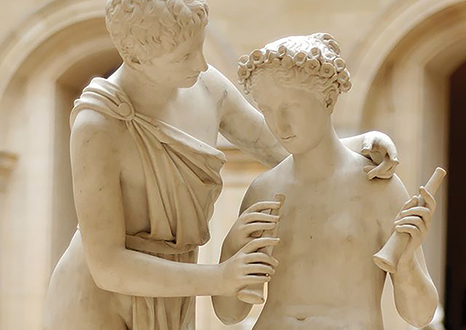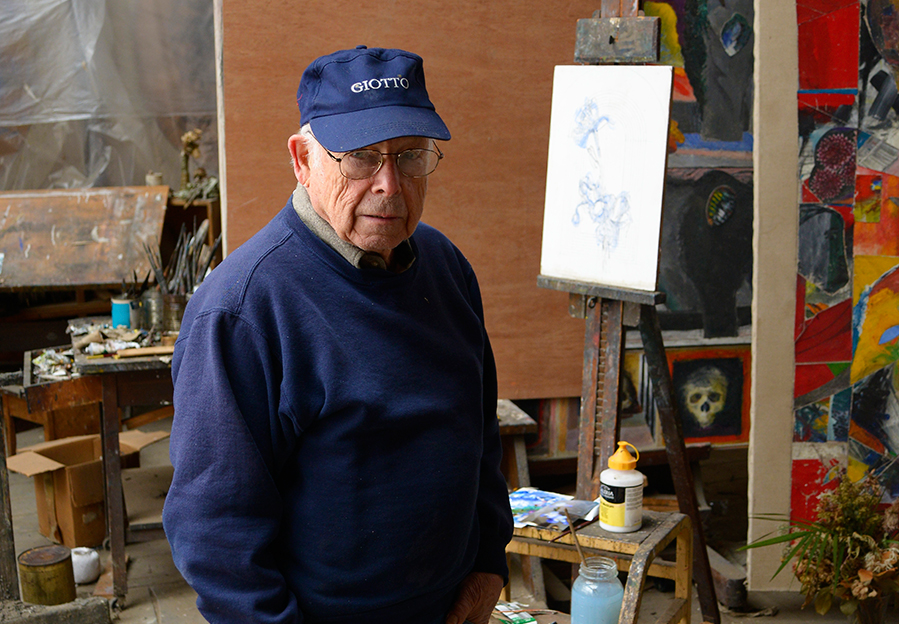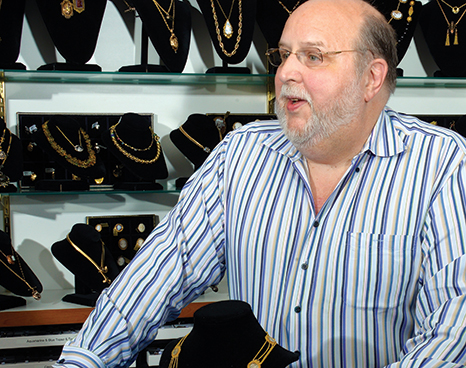When we think of romance and romantic passion, we probably think of the traditional trappings — hearts and flowers, chocolates and Champagne, cute cutout Cupids and diamond rings, Valentine’s Day and June weddings.
But the word “romance” has its origins in the everyday Latin that gave rise in the sixth through ninth centuries to the so-called romance languages – including Spanish, Portuguese, French, Italian and Romanian. As such, it sweeps across time to embrace everything from medieval chivalry to European arts in the early 19th century to Hollywood movies to the most widely read genre today.
The heart of a romance remains, well, romance. A man and a woman. They meet and fall in love. Stuff happens. But in the end, true love prevails. That’s how the ancient Greeks saw it. Or at least that’s how the later Latin-speaking Christian interpreters of their tales saw it. In Longus’ “Daphnis and Chloe” – whose many versions include a ballet with a Maurice Ravel score – the title characters are an orphaned shepherd and shepherdess innocent of love’s first stirrings. It’s only after enduring many trials and reuniting with their birth parents that they are ready to begin a life together.
When it comes to romance, however, the classical period had nothing on the Middle Ages. Writing at first in Old French, Anglo/French-derived Norman and Occitan – spoken in parts of France, Monaco, Spain and Italy – the medieval poets mashed together ancients like Achilles, Alexander the Great and King Arthur with contemporaries like Richard the Lionheart in stories of chivalrous knights, distressed damsels, slain dragons and derring-do. By the late Renaissance, such works were out of fashion to such an extent that Miguel de Cervantes would ridicule the knightly tradition in his “Don Quixote.” Yet such is the power of romantic love that when Cervantes’ novel reappeared as the inspiring 1965 musical “Man of La Mancha,” its message was the opposite of what the satiric book intended. It was romantic – not only in the Don’s transformative love for the tavern wench Aldonza, his idealized Dulcinea, but in his eagerness to embrace bold ideas and life’s epic journey.
That is Romanticism with a capital “R,” which came to define the arts in the early 19th century as influencers turned away from the cool rationality of the 18th century and the mundane grit of the Industrial Revolution for a more expressive approach that would encompass the natural and transcendent worlds. Romanticism is the colorful dynamism of Delacroix and the moonlit mysticism of Caspar David Friedrich set to the titanic tumult of Beethoven. It’s not only the poetry of Keats, Shelley and Byron but their all-too-brief lives as well – Keats dying in Rome in 1821 of tuberculosis (and presumably a broken heart at the poor reception of his work “Endymion”); the admiring Shelley eulogizing him in his poem “Adonais” before drowning off the coast of Italy a year later, a copy of Keats’ poems in his pocket; Byron outliving his friend Shelley by two years before succumbing to a fever as he prepared to fight for Greek independence.
Though neoclassical in form, Edward Onslow Ford’s exquisite sculpture for the Shelley Memorial at University College, Oxford, crystallizes Romanticism. The beautifully tortuous body of Shelley, like something out of Géricault’s “The Raft of the Medusa,” washes up on the shores of immortality, returned to the elements the Romantics so loved.
In the 20th century, romance reinvented a familiar genre even as it married a new one. With its larger-than-life, luminous images, the newfangled motion pictures seemed tailor-made for romantic dramas and comedies. Everyone has his favorites, which spring to the mind the instant you say “romance.” In the dramatic category, “Gone With the Wind” and “Casablanca,” to be sure. But what about “Now, Voyager,” in which self-sacrificing Bette Davis relinquishes an adulterous life with the equally noble Paul Henreid in order to raise his child by saying: “Don’t let’s ask for the moon. We have the stars.” Yep, nothing says “romance” like the physical renunciation of it.
As for romantic comedies, they helped chart the sexual revolution of the 20th century. From reporter Clark Gable stringing a demure blanket between himself and runaway bride Claudette Colbert in “It Happened One Night” (1934) to Cher exhorting her fiancé’s brother Nicolas Cage to “leave nothing left for him to marry, nothing but the skin over my bones” as they make passionate love in “Moonstruck” (1987).
But perhaps no genre has been transformed by romance the way the novel has. The virtuous heroines of Samuel Richardson’s “Pamela,” Jane Austen’s comedies of manners and Georgette Heyer’s Regency romances – written in the 1920s but set in Austen’s time – would blush at the explicit goings-on in Kathleen Woodiwiss’ “The Flame and the Flower.” Flourishing amid a wave of feminism, “Flame” foreshadowed the romance boom of the 1980s that shows no signs of abating.
Romance novels account for more than half of all paperbacks sold, and while they have been ridiculed as “bodice-rippers” or “mommy porn,” filled with heaving bosoms and aroused members, they can range in both sexual and literary content as well as subgenre. Today you’ll find historical romances (set before World War II), erotic romances like “Fifty Shades of Grey,” which comes to the big screen Valentine’s Day weekend (see related story), even vampire romances.
Since women make up 90 percent of the readers, the romance is usually told from the women’s point of view. But one of the hottest subgenres in our post-feminist, gay-rights age is the male/male romance – written by and for women, allowing them to explore the themes of the traditional romance through the distant mirror of a gay relationship.
Some things, however, never change. As the song says:
“It’s still the same old story,
A fight for love and glory
A case of do or die.
The world will always welcome lovers as time goes by.”





